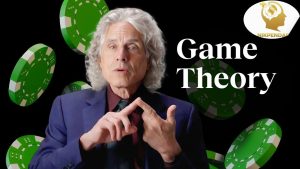
Beginner
Task 1: Share Your Opinion After watching the video, tell your partner or a small group your opinion on one of the following topics. Use simple sentences.
- Do you think it is more important to be intelligent or to behave well with money? Why?
- What is the “price” you have to pay to get a new watch?
- Do you think it is hard to save money? Why or why not?
Task 2: Discuss a Quote Choose one of the short quotes from the video and discuss with a partner what it means in your own words.
- “Financial success is not a hard science. It’s a soft skill.”
- “Your behavior with money is often times more important than how intelligent you are.”
- “It doesn’t come for free.”
Task 3: Role-Play a Simple Conversation With a partner, role-play a short conversation. One person has some money and wants to buy a new, expensive item. The other person gives advice from the video about being smart with money.
Intermediate
Task 1: Summarize the “Pay the Price” Takeaway In a small group, each person should explain the main idea of “Takeaway number one.” Use the example of the watch to explain the concept of paying a price. Then, explain what the “price” is for investing.
Task 2: Discuss Volatility The video talks about volatility as the price of investing. In your group, discuss the following:
- What does volatility mean in the video’s context?
- How does the speaker use the Netflix example to illustrate this?
- How does this idea make you feel about investing?
Task 3: Compare and Contrast The video contrasts the story of the janitor, Ronald Reed, with a person who has a Harvard diploma. Discuss with a partner how their stories show that behavior with money is more important than what you know.
Advanced
Task 1: Analyze a Story as a Metaphor The video uses the story of the watch as a metaphor. In a group, discuss how the metaphor works.
- What does the “watch” represent in the world of investing?
- What does “stealing the watch” represent?
- How does the simple choice in the story (paying vs. stealing) relate to the more complex choices in investing (e.g., getting rich quick)?
Task 2: Debate a Statement The video states, “If you don’t have the stomach to stay the course… don’t aim to maximize your returns.” Debate this statement in a small group.
- One side argues that it’s always worth taking risks for high returns.
- The other side argues that it’s important to be realistic about your risk tolerance.
- Use examples from the video (e.g., Netflix, S&P 500) to support your arguments.
Task 3: Deliver a “Mini-Lecture” Prepare a short, informative talk (2-3 minutes) for your classmates. Choose one of the key takeaways from the video and present it.
- Option A: Explain the story of Ronald Reed and the importance of good behavior with money.
- Option B: Explain the concept of volatility and why it is the “price” of high returns.
- Option C: Explain the S&P 500 example and what it teaches about long-term investing.
Beginner
Task 1: Listen for Key Information 👂 Listen to the video and write down the answers to these questions with a short phrase or a single word.
- What was Ronald Reed’s job?
- How much money did he have when he died?
- What is the “price” you have to pay for a watch?
- What does the speaker say about investing? Does it come for free?
Task 2: Identify Who’s Who 🤔 Listen to the video and identify the role of each person or group.
- Ronald Reed: a janitor
- Morgan Household: __________________
- Peter Lynch: __________________
- A Harvard diploma holder: __________________
Task 3: Complete the Sentence 📝 Listen to the video and complete the sentences with the missing words.
- Your __________________ with money is often more important than how intelligent you are.
- Financial success is not a hard __________________.
- The concentrated portfolio brings with it a characteristic: it will be __________________.
- All investors will experience __________________.
Intermediate
Task 1: Listen for Main Ideas 📖 Listen to the video and summarize the main idea of the following sections.
- Section 1 (0:00-0:55): The story of Ronald Reed and the lesson about behavior being more important than intelligence.
- Section 2 (0:55-2:25): The “Pay the Price” takeaway, using the watch and investing as examples.
- Section 3 (2:25-end): The examples of Netflix and the S&P 500 to show the reality of volatility.
Task 2: Listen for Specific Details 🔍 Listen to the video and answer the questions with complete sentences.
- What two things did Ronald Reed not do to become rich?
- What is the “price” or “fee” for having high returns in the stock market?
- How much did Netflix’s stock price fall in 2011?
- According to the video, what percentage can an S&P 500 investment be down from its high?
Task 3: Paraphrase the Quote 🗣️ Listen to the video and explain the following quotes in your own words.
- “Financial success is not a hard science. It’s a soft skill where how you behave is more important than what you know.”
- “If you don’t have the stomach to stay the course when your net worth decreases… don’t aim to maximize your returns.”
- “You have to look at this [volatility] as the price you pay for a brighter future.”
Advanced
Task 1: Listen for Implicit Meaning 🧠 Listen to the video and explain the deeper meaning behind these statements, based on the context.
- “Letting the wonders of compounding do its thing.”
- “Don’t aim to maximize your returns.”
- “Could you stomach facing them knowing that you might have endangered their future?”
Task 2: Note-Taking and Analysis ✍️ Listen to the video and take notes on the main concepts presented. Afterward, write a brief analysis of how the speaker uses a contrast between a simple story (the janitor) and a complex one (the Netflix investment) to illustrate the same core idea about financial behavior. How does this method make the argument more convincing?
Task 3: Analyze the Language 🗣️ Listen to the video and focus on the vocabulary and phrases used.
- Explain the meaning of the phrase “have the stomach to stay the course” in the context of the video.
- What does the speaker mean by an “all-in Netflix approach to investing”?
- The speaker uses the question “Would you have sat still in that boat?” to describe a situation. Explain the analogy of being “in that boat” and how it relates to the investment journey.
Beginner
Task 1: Matching
Read the sentences about the video and match the first part of the sentence to the correct second part.
- Ronald Reed had saved
- Financial success is a soft skill because
- The price for high returns is
- Netflix lost many
- All investors will experience
Sentences: a. volatility. b. customers in 2011. c. $8 million. d. volatility. e. behavior is more important than what you know.
Task 2: True or False
Read the following sentences. Write “T” if the sentence is true or “F” if it is false, based on the video.
- Ronald Reed won the lottery to get his money.
- The video says that you should steal a watch if you want one.
- A concentrated portfolio will have high returns and low volatility.
- Netflix’s stock price fell by 80% in 2011.
- Investing in the stock market comes for free.
Task 3: Vocabulary and Definitions
Read the following words from the video and match them to their simple definitions.
- janitor:
- consistently:
- excel:
- journey:
- tough:
Definitions: a. a person who cleans buildings. b. to be very good at something. c. difficult or hard. d. an act of traveling from one place to another. e. always in the same way.
Intermediate
Task 1: Read for Specific Details
Read the video and answer the following questions with details from the text.
- What is the main moral of Ronald Reed’s story?
- What is the “price” for having high returns in the stock market?
- What are the two major downturns of the S&P 500 index fund mentioned in the video?
- What does the speaker say you might have to tell your spouse and kids if your portfolio loses a lot of money?
Task 2: Find the Quotes
Read the video carefully and find the quotes that match the descriptions below.
- The quote that describes how financial success is a soft skill.
- The quote that describes the “price” for high returns.
- The quote that describes the S&P 500’s volatility over time.
- The quote that describes the moral of investing.
Task 3: Summarize a Takeaway
Choose one of the following key ideas from the video and write a short paragraph (4-5 sentences) summarizing it. Explain the idea and use one of the examples from the video to support your summary.
- The story of Ronald Reed and the importance of behavior.
- The “Pay the Price” concept.
- The volatility of the S&P 500.
Advanced
Task 1: Analyze Text Structure
Read the video and analyze its structure. Answer the following questions.
- How does the speaker use the story of Ronald Reed to introduce the main argument of the video? What makes this story effective?
- What is the purpose of the contrast between the watch example and the investing examples? How does it help the reader understand a difficult concept?
- How does the speaker use rhetorical questions (e.g., “Would you have sat still in that boat?”) to engage the reader and make the concepts more personal?
Task 2: Critical Reading and Interpretation
Read the video and write a short response to the following questions.
- The video states that “financial success is not a hard science.” What is a “hard science,” and how does the video support its claim that financial success is not one?
- Explain the paradox presented in the video that to get “high returns,” you must accept “volatility.” Why might this be counterintuitive to a new investor?
- Do you agree with the video’s claim that all investors will experience volatility? Why or why not? Use evidence from the text and your own ideas to support your answer.
Task 3: Vocabulary in Context
Read the video and explain the meaning of the following words as they are used in the text.
- compounding (Paragraph 1)
- concentrated (Paragraph 2)
- ensuing (Paragraph 3)
- endangered (Paragraph 3)
- nonetheless (Paragraph 4)
Beginner
Task 1: Fill in the Blanks
Read the following sentences about the video and fill in the blanks using words from the video.
- The janitor, Ronald Reed, had __________________ million in savings.
- Financial success is a __________________ skill, not a hard science.
- The price for high returns in investing is __________________.
- In 2011, Netflix’s stock price fell __________________ from its peak.
- All investors will experience __________________.
Task 2: Write a Short Summary
Write a short paragraph (3-4 sentences) explaining the story of Ronald Reed. Explain how he became rich and what the video says is more important than being intelligent.
Task 3: Write a Short Letter
Write a short letter to a friend. Tell them you want to start investing and explain what the “price” of investing is, using the example of the watch from the video.
Intermediate
Task 1: Summarize a Takeaway
Choose one of the following key ideas from the video and write a short paragraph (4-5 sentences) summarizing it. Explain the idea and use one of the examples from the video to support your summary.
- The importance of financial behavior over intelligence.
- The “Pay the Price” concept.
- The reality of volatility in the stock market.
Task 2: Write a Journal Entry
Imagine you are an investor who bought a lot of Netflix stock in 2011. Write a journal entry about your feelings. Use the information from the video to describe the terrible returns and what you might have told your family.
Task 3: Write a Short Blog Post
Write a short blog post titled, “Is Your Money Safe?” Explain why stock market investing is a great way to create wealth, but also why it’s important to understand the concept of volatility as a “price.”
Advanced
Task 1: Write an Essay
Write a short essay (2-3 paragraphs) analyzing the statement, “financial success is not a hard science. It’s a soft skill.” Use the stories of Ronald Reed and the Netflix investor to support your argument.
Task 2: Write a Persuasive Email
Write an email to a friend who is thinking about investing all of their money into one single stock. Use the video’s arguments about concentrated portfolios and the dangers of extreme volatility to persuade them to be more cautious.
Task 3: Analyze and Respond
The video states that investing in the S&P 500 would still mean you had to face many years of being “down 20%.” Write an analysis of this statement. What does this reveal about the difference between short-term thinking and long-term investing? How does this concept of a long-term journey apply to other areas of life?





